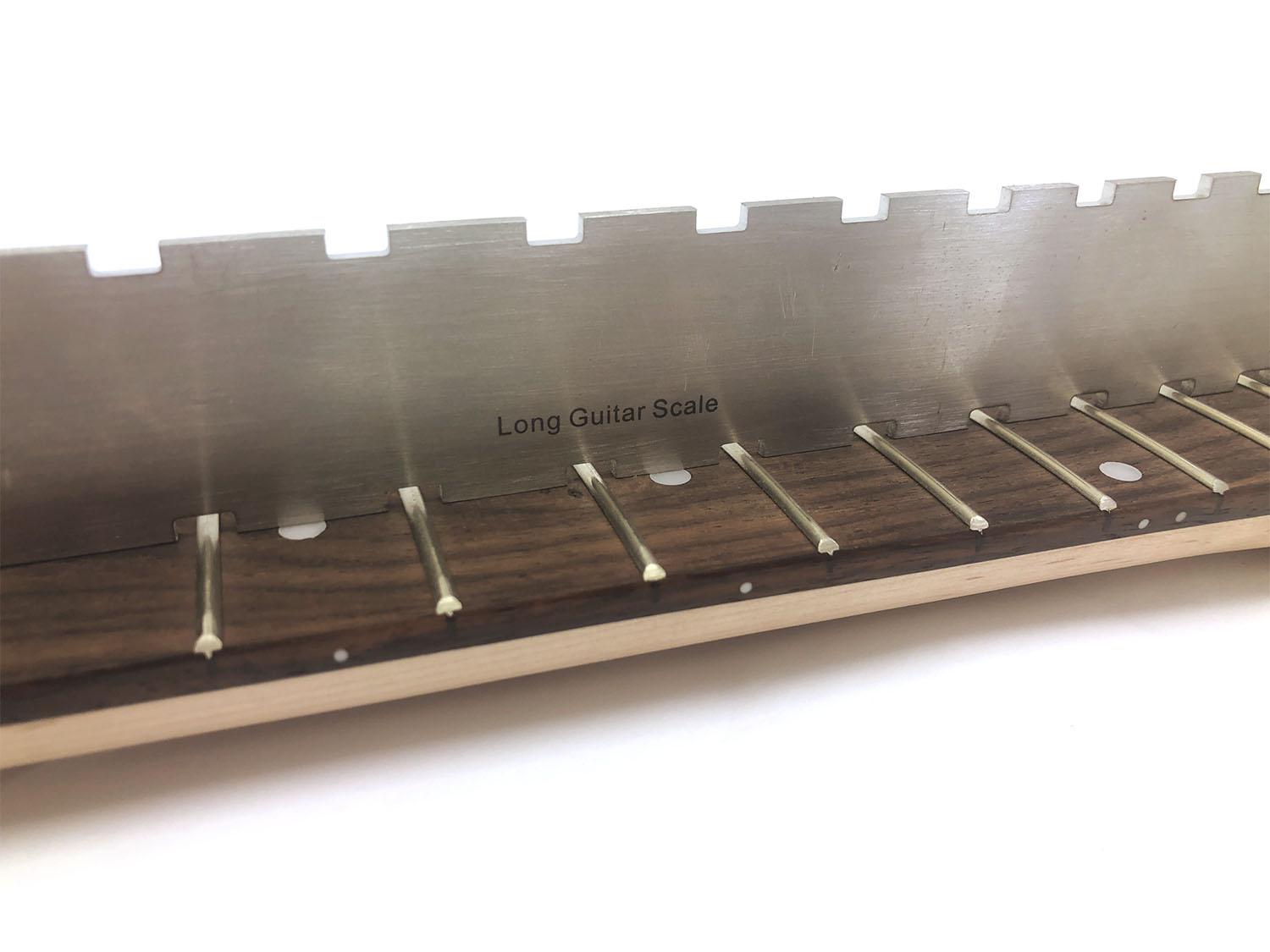A custom 24 is 'slightly' longer from the bottom of the body to the the tip of the headstock. This is because the neck is slightly longer as it joins the body at a few frets higher.
If you look at the picture above and pay attention to the fret markers, you will see on the 22, the top of the body appears to join on the 21st fret, the fret with the Hawk landing. On the Cu24, the neck appears to join on the 23rd fret - the one before the owl - that's the difference in length.
The neck Pick up is in the same position on the body on both guitars but because the neck is now longer on the Cu24, the nut is slightly further away. To keep the same 25" scale length, the bridge has to be moved slightly further towards the neck pick up which also means the Bridge pick-up is moved towards the neck slightly too. The reason the bridge pick-ups sound so similar though is because they are both the same distance from the bridge and its distance from the bridge that determines the way pick-ups sound. The string cannot vibrate as much near the bridge - that's where the string is anchored and the further away, the more it can move. Whilst the neck Pick-ups are in the same place on both, its the fact that the bridge is moved closer on the Cu24 that changes the way the neck Pick-up sounds.
Many people think that all PRS do is stick another two frets on which then means the neck has to move back a bit but in reality, the neck stays put - its the bridge and bridge PU that are moved as the neck is longer and therefore the nut is further away. The advantage of this though is that because the neck joins higher up, its easier to reach the 22nd fret - especially on the low E if you ever needed to. If they stuck 2 frets on the end and moved the neck Pick up, frets 23 and 24 would be very much more difficult to reach and play.
The extra length of the neck obviously means that the headstock is slightly further from the body. Scale length determines the size of the fret gap - the distance between the fret wires. The shorter the scale, the narrower the fret gap. The first fret gap on a strat is much larger than the equivalent fret on a Les Paul. That's why you can't use a single notched straight edge for ALL guitars and why they are sold according to scale length. Most are dual purpose - 1 edge for 1 scale length and the other edge for another.
There are a lot of differences between a PRS Cu22/24 and a Strat and its best to try each out and compare yourself...





